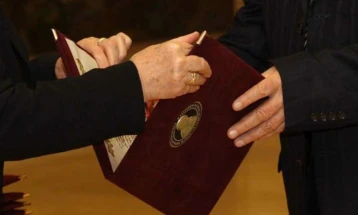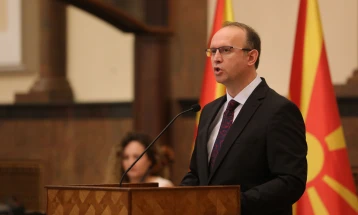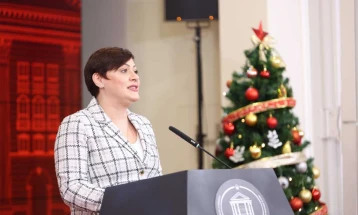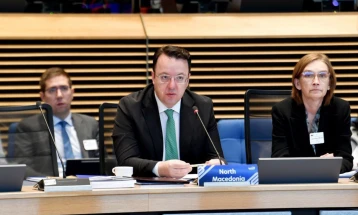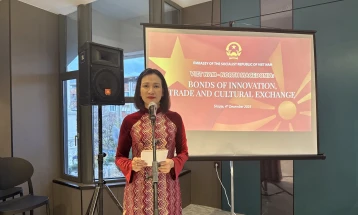Analysis: Status quo, drop in social media usage by public officials and institutions in 2022
- Out of 120 MPs, 115 were present on at least one social media platform in 2022. President Stevo Pendarovski was fully online, whereas the Government ended last year with 20 out of 21 Minister
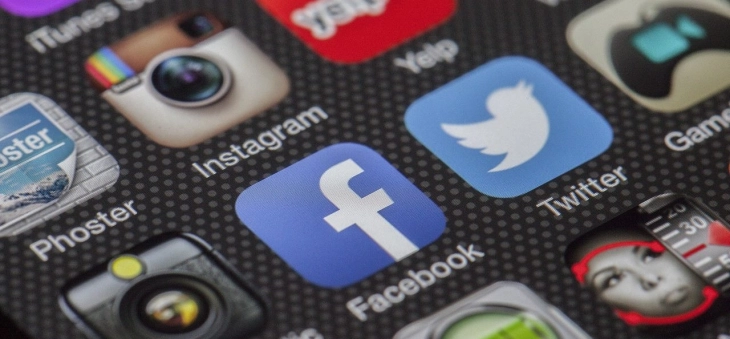
Skopje, 5 January 2023 (MIA) – Out of 120 MPs, 115 were present on at least one social media platform in 2022. President Stevo Pendarovski was fully online, whereas the Government ended last year with 20 out of 21 Ministers who were online on at least one social media platform.
The number of active mayors on social media remains unchanged from 2021 – 80 out of 81.
These results come from the annual analysis conducted by the Institute for Good Governance and Euro Atlantic Perspective (IDUEP). The analysis shows that politicians and public institutions are slowly forgetting that their active presence on social media is an important segment of transparency and accountability, two unbreakable parts of the good governance principle.
Exposure to the citizens’ comments, critiques and opinions through such digital tools should be taken seriously by the authorities and institutions as another factor to determine whether they are truly ready to deal with corruption, clientelism and decision-making in close party circles.
“Authorities and politicians at central and local level have been talking for two years now about how committed they are to the digital transformation of society. However, they largely failed in the segment of digital communication with the citizens and media, as well as in offering quality, quick online services. We’re witnessing one-sided communication, a drop in institutions as active users of online tools, and we can’t even discuss the quality of the content because they’ve largely become classic political tools where the entire focus is placed on the politicians and their agendas instead of the citizens’ needs,” according to communicologist and analysis author Bojan Kordalov.
The analysis shows a positively unchanged result with the President, who was present on his official website, as well as Facebook, Twitter and Instagram accounts. A status quo, or a total of 115 out of 120 MPs were active on Facebook in 2022. In terms of Twitter, there are 6 MPs less who used the platform in 2022 compared to 2021, bringing the number down to 18. In 2022, 35 MPs chose Instagram as a possible means to communicate with the citizens, the same number as in 2021. In addition, Parliament is noting visible progress on its new website which is easier to navigate and offers a direct opportunity to communicate with MPs. IDUEP’s recommendation given over 5 years ago remains unfulfilled, regarding setting up direct links to the MPs’ social media accounts.
The Government also noted a mild drop in social media usage in 2022, with 20 out of 21 ministers active on Facebook, 12 on Twitter and 17 on Instagram – an increase of 2 ministers in comparison to 2021. Twelve ministers were active on all of the aforementioned platforms, while there is one minister who uses no social media. In comparison to 2021, when all ministers used Facebook, or at least one social media, 16 chose Twitter and 15 chose Instagram. Thirteen were active at the same time on all aforementioned platforms. Ten were active on all three platforms in 2020.
The analysis also includes the ministries’ online presence, as well as the Government’s web site. All 17 institutions have an official website, and all of them were active on Facebook. Eight ministries were active on Twitter, and only two on Instagram. Four ministries have an official YouTube channel.
“The Government and the Ministry of Political System are the only two institutions with a simultaneous presence on a web-platform and user accounts on Facebook, Twitter, Instagram and YouTube. A good news is that for the second year in a row, there isn’t a single ministry that’s not offering at least two contact options for the citizens and media through digital tools,” the analysis points out.
In comparison to 2021, all 17 ministries were active on Facebook, 8 on Twitter, 5 on Instagram and YouTube, and the Government and two more ministries were active with their own website and all three social media platforms. In 2020, one ministry did not offer the opportunity to be contacted via social media, whereas in 2019, five ministries did not have this option.
“The Covid-19 pandemic stressed the need for increased institutional presence on digital channels, but according to all research, the citizens are still unhappy with the public services the institutions provide,” Kordalov pointed out.
Units of local self-government also note a status quo, a mild increase and a mild drop in social media usage. Out of 81 mayors, 80 were active on Facebook in 2022, only 6 on Twitter, and 40 on Instagram. Four mayors used all three simultaneously.
All 81 municipalities had their own websites in 2022, 60 had Facebook pages, only 2 had Twitter accounts, 9 had Instagram accounts and 39 had their own YouTube channels. The City of Skopje and the Municipality of Karposh are the only ones to have both a website and presence on all three social media platforms, as well as YouTube in 2022. However, 13 municipalities cannot be contacted on any of these social media sites.
The analysis also concludes that private profiles of public office holders pose a huge problem.
“They have a right to privacy, of course, but it’s a fine line between the person and their office. We advise that they either make their social media profiles public, or create additional pages and channels where they can be contacted by the citizens and the media so that they can send their opinions, suggestions and critiques,” according to Kordalov, who is also the coordinator for the IDUEP Transparency and Digitization Program.
He believes that the insufficient usage of digital tools is a serious waste of opportunity for the Government and the institutions to lessen social apathy in young people, who are the most frequent users of digital tools.
The basic recommendations from the analysis remain unchanged: two-sided communication, listening and responding to the public’s needs, less PR pamphlets and ads, building internal professional PR teams who will focus on the citizens’ questions and demands, instead of focusing on the public office holder’s image. Another recommendation is to set up digital channels as part of the mandatory elements for two-sided communication with the citizens and media, because they need to be present wherever is simplest and easiest for the public to be able to contact them.
“This is the only way to simplify complex bureaucratic procedures, to make it easier for the citizens to exercise their rights, i.e. to show visible and concrete results through full transparency and digitization in the fight against corruption, partisanship and to reduce the citizens’ discontent with the way the institutions function,” according to the analysis. dk/nn/
